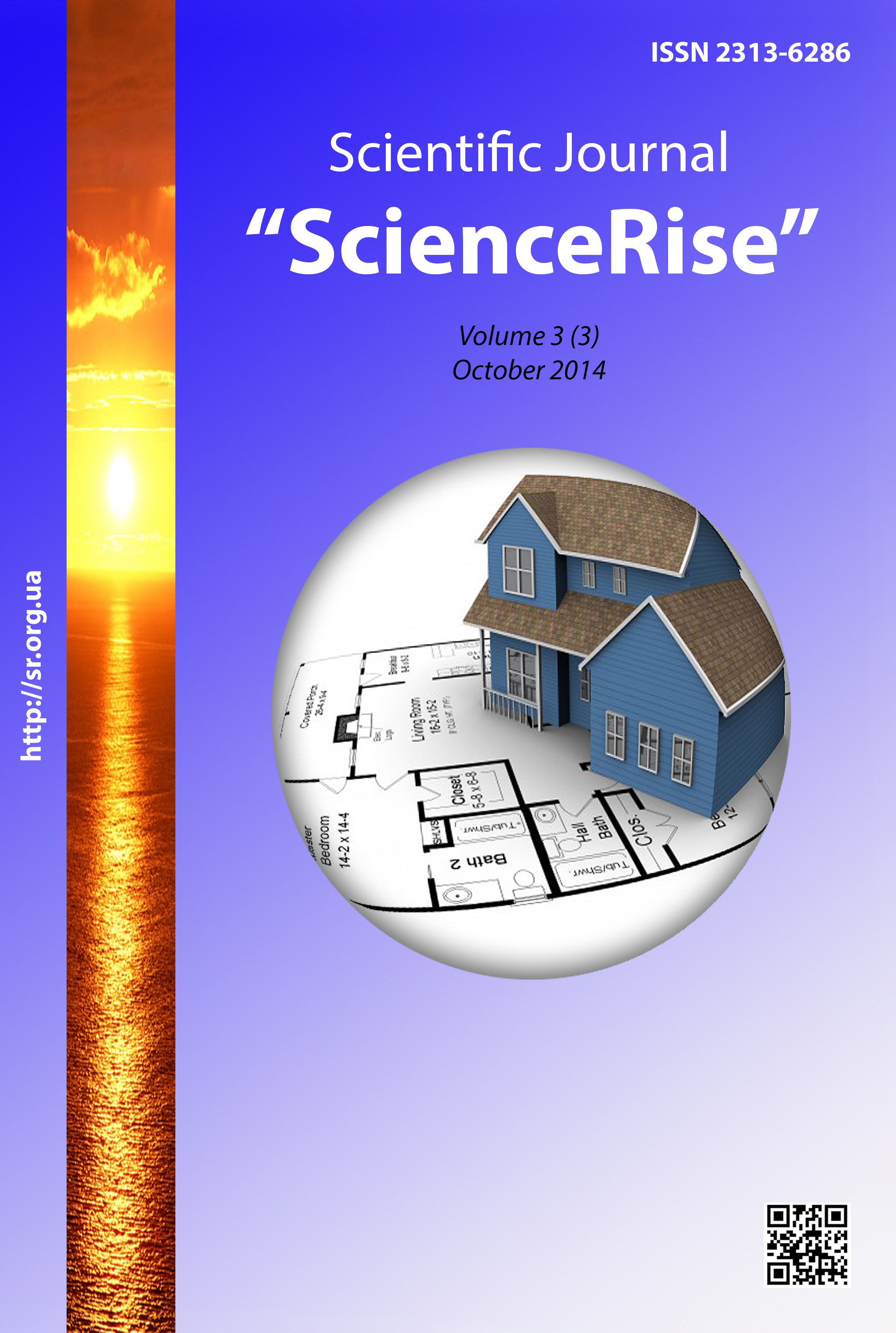Адаптивная система классификаторов МГУА
DOI :
https://doi.org/10.15587/2313-8416.2014.27392Mots-clés :
обобщенный релаксационный итерационный алгоритм (ОРИА), многорядный алгоритм с комбинаторной селекцией обобщенных переменных (МАКСО)Résumé
Показано, что модели самоорганизации, построенные обобщенным релаксационным итерационным алгоритмом (ОРИА), являются наиболее точными при проверке классификаторов на новых данных. Максимальная точность классификации зависит от целевой выборки, вида модели и внешнего критерия МГУА и состава системы классификаторов. Известный многорядный алгоритм с комбинаторной селекцией обобщенных переменных (МАКСО), имеет более гибкую настройку точности на рабочей выборке по сравнению с ОРИА, но гораздо меньшее быстродействие при решении задачи классификации.
Références
1. Ivakhnenko, A. G., Stepashko, V. S. (1985). Pomehoustojchivost' modelirovanija [Simulation noise immunity]. Kyiv, USSR :Naukova dumka, 214.
2. Stevens, S. S. (1946). On the Theory of Scales of Measurement. Science, 2684 (103), 677–680.
3. Kondrashova, N. V., Pavlov, V. A., Pavlov, A. V. (2013). Reshenie zadachi medicinskoj diagnostiki linejnym diskriminantnym analizom i MGUA [Problem solution of medical diagnosis by linear discriminant analysis and GMDH]. USiM, 244 (2), 79–88.
4. Yenyukov, I. S. (Ed.) (1989). Faktornyj, diskriminantnyj i klasternyj analiz [Factorial, Discriminant and Cluster analyses]. Moscow, USSR : Finance and Statistics, 215.
5. Sarychev, A. P. (1991). Diskriminantnyj analiz s obuchajushhimi i proverochnymi podvyborkami nabljudenij [Discriminant analysis with training, and check the subsample of observations]. Avtomatika, 2, 55–59.
6. Sarychev, A. P. (2008). Reshenie zadachi diskriminantnogo analiza v uslovijah strukturnoj neopredelennosti na osnovanii MGUA [Problem solution of discriminant analysis in the conditions of structural uncertainty based on GMDH]. Problemy upravleniya i informatiki, 3, 100–112.
7. Sarychev, A. P., Sarycheva, L. V. (2010). GMDH-Based Criterion for Optimal Set Features Determination in Nonlinear Discriminant Analysis. Proc. of 3d International Conference on Inductive Modeling, ICIM’2010. Yevpatoria (Ukraine), 40–43.
8. Ivakhnenko, A. G. (1971). Sistemy jevristicheskoj samoorganizacii v tehnicheskoj kibernetike [Systems of heuristic self-organization in technical cybernetics]. Kyiv, USSR, Tehnika, 364.
9. Klecka, W. R. (1980). Discriminant analysis. Quantitative Applications in the Social Sciences Series, Thousand Oaks, CA: Sage Publications. http://dx.doi.org/10.4135/9781412983938
10. Sarychev, A. P. (1988). Iteracionnyj algoritm MGUA dlja sinteza razdeljajushhej funkcii v zadache diskriminantnogo analiza [Iterative GMDH algorithm for synthesis separating function in problem of discriminant analysis]. Avtomatika, 2, 20–24.
11. Pavlov, O. V. (2006). Algorytmy samoorganizacii' v zadachah pidvyshhennja informatyvnosti geometrychnyh modelej procesiv, zadanyh tochkovym karkasom [Algorithms for self-organization in problems of increasing informativity geometric models for the processes specified with help of points framework]. Kyiv, 197.
12. Pavlov, A. V. (2011). Obobshhjonnyj relaksacionnyj iteracionnyj algoritm MGUA [Generalized relaxation iterative algorithm of GMDH]. Inductive Modelling of complex Systems. Kyiv: IRTC IT&S, 2, 95–108.
13. Kondrashova, N. V., Pavlov, V. A., Pavlov, A. V. (2006). Mnogorjadnyj algoritm veernyh reshenij [Multilayered algorithm of fan solutions]. herald National Technical Univ. ’KPI’. Informatics, Management and Computer Science, 45, 218–227.Téléchargements
Publié-e
Numéro
Rubrique
Licence
(c) Tous droits réservés Нина Владимировна Кондрашова, Павлов Александр Владимирович, Андрей Владимирович Павлов, Владимир Анатольевич Павлов 2014

Cette œuvre est sous licence Creative Commons Attribution 4.0 International.
Our journal abides by the Creative Commons CC BY copyright rights and permissions for open access journals.
Authors, who are published in this journal, agree to the following conditions:
1. The authors reserve the right to authorship of the work and pass the first publication right of this work to the journal under the terms of a Creative Commons CC BY, which allows others to freely distribute the published research with the obligatory reference to the authors of the original work and the first publication of the work in this journal.
2. The authors have the right to conclude separate supplement agreements that relate to non-exclusive work distribution in the form in which it has been published by the journal (for example, to upload the work to the online storage of the journal or publish it as part of a monograph), provided that the reference to the first publication of the work in this journal is included.

